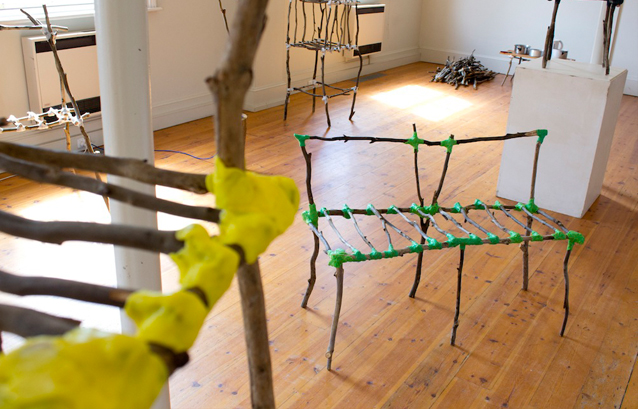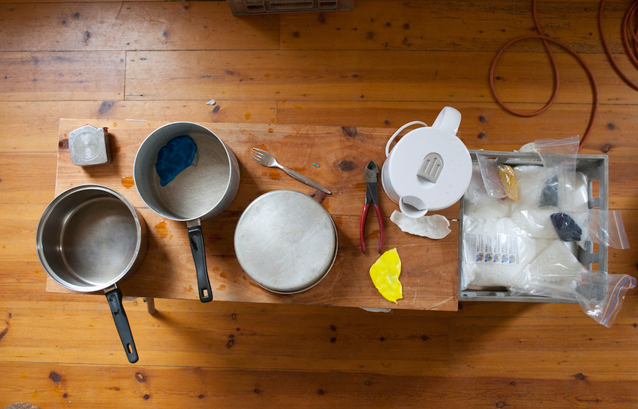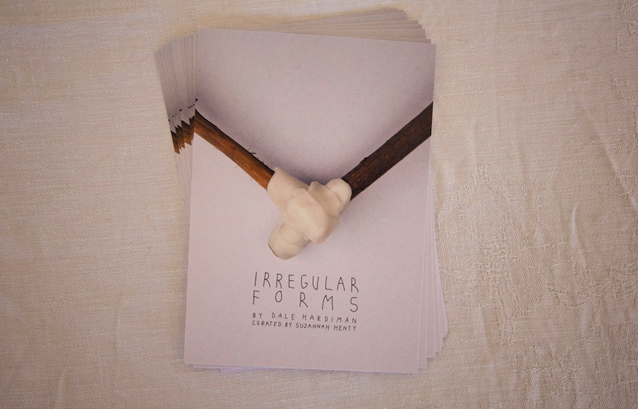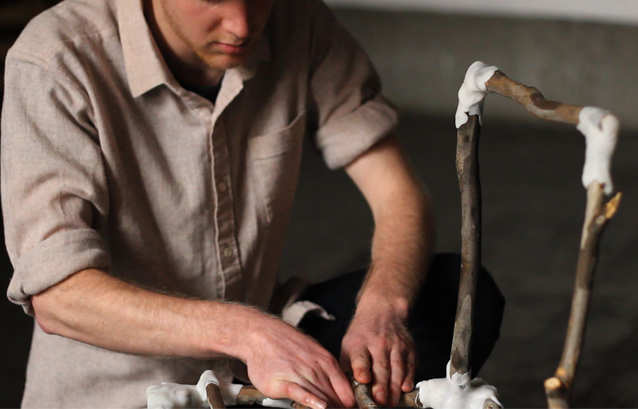- When did you start creating your artworks?
I have always had a fascination with waste materials and alternative materials. Prior to studying furniture design, I built objects and furniture from materials and objects that I’d sourced from the recovery yard at the landfill in Bendigo, this was not because I didn’t like using new materials, but because I wanted to give waste materials a new use, giving value once more to the valueless, which allowed for completely abstract objects and ideas to manifest in a entirely unconventional manner, changing the entire design process for each object.

- What first inspired you to be an artist?
Creating the work I produce now came as a natural progression. I began studying furniture design, which had a pull towards producing commercial objects, and for some unknown reason I started producing work that couldn’t possibly be commercialised or mass-produced, and I became much more interested in the way we produce the objects, as opposed to the final piece.
- Who do you admire in the art world?
The people I most admire use the actual process of creation to develop and define their work. Max Lamb is a perfect example, where he developed furniture (‘Pewter Stool” 2006) through casting pewter ingots on the beach in moulds made from the sand. Another great example of this is Markus Kayser’s ‘Solar Sinter’ project (2011), where he built a CNC lead machine that used the concentration of sunlight to not only run the machine, but also melt sand granules into glass objects. These processes then become crucial to the work (to the extent that process is as crucial as the work), and they become alternative techniques of manufacturing.

- What made you choose the medium you use?
In 2011 I designed and produced the Kids Straw Stool, a kids stool made from completely off the shelf ingredients that could be bought from the supermarket and cooked using normal household utensils. The Straw Stool was based around the idea that parents could cook furniture with their children, teaching them about objects and the environmental issues at a young age. The Straw Stool once it had reached it’s end of life could be placed in the compost or backyard and would break down in 4 – 6 weeks, and because it was also imbedded with grass seeds and pea straw, would grow once broken down. This piece made me completely fascinated with the idea of biodegradable furniture, the idea of ephemeral objects and locating manufacturing and disposal within the common household. I came across this wax product through a lot of research, and after e-mailing the company who produced it in Canberra and working collaboratively with the owner (Peter Edmunds) over a 6 month period, developed the way it is used now as furniture.


- What is the inspiration for your current collection of works?
I began the work with experimenting with the wax material, and the branches came after that process. The inclusion of the branches came as a result of working with the high-tech, highly malleable wax that could have endless possibilities and uses. The beautiful thing about tree branches are their inconsistencies, no two branches are the same, and their entire existence is dependent completely on their environmental conditions, so the contrast between a highly structured and chemical material to that of one that is highly dependent on locality and how they work to create structures became the inspiration to the work. The process of designing the pieces didn’t begin until I had all the branches, as I wanted the branches to dictate the end product, while the wax became the facilitator of the work.

- Have you any new inspirations? Any idea what you might create next?
I’ve been working with a vast array of people on collaborative projects recently, working with different production methods and materials with people in completely different disciplines. New inspiration is with rocks, dirt, and skin!
Check out Irregular Forms, an abstract documentary following the process behind Hardiman’s unique work. The documentary was filmed over two days leading up to the opening of his exhibition, also titled Irregular Forms.
IRREGULAR FORMS: A Documentary from Tobi Mambwe on Vimeo.
Footage – Tobi Mambwe
Sounds – Seth Nolan & Samuel Nolan

